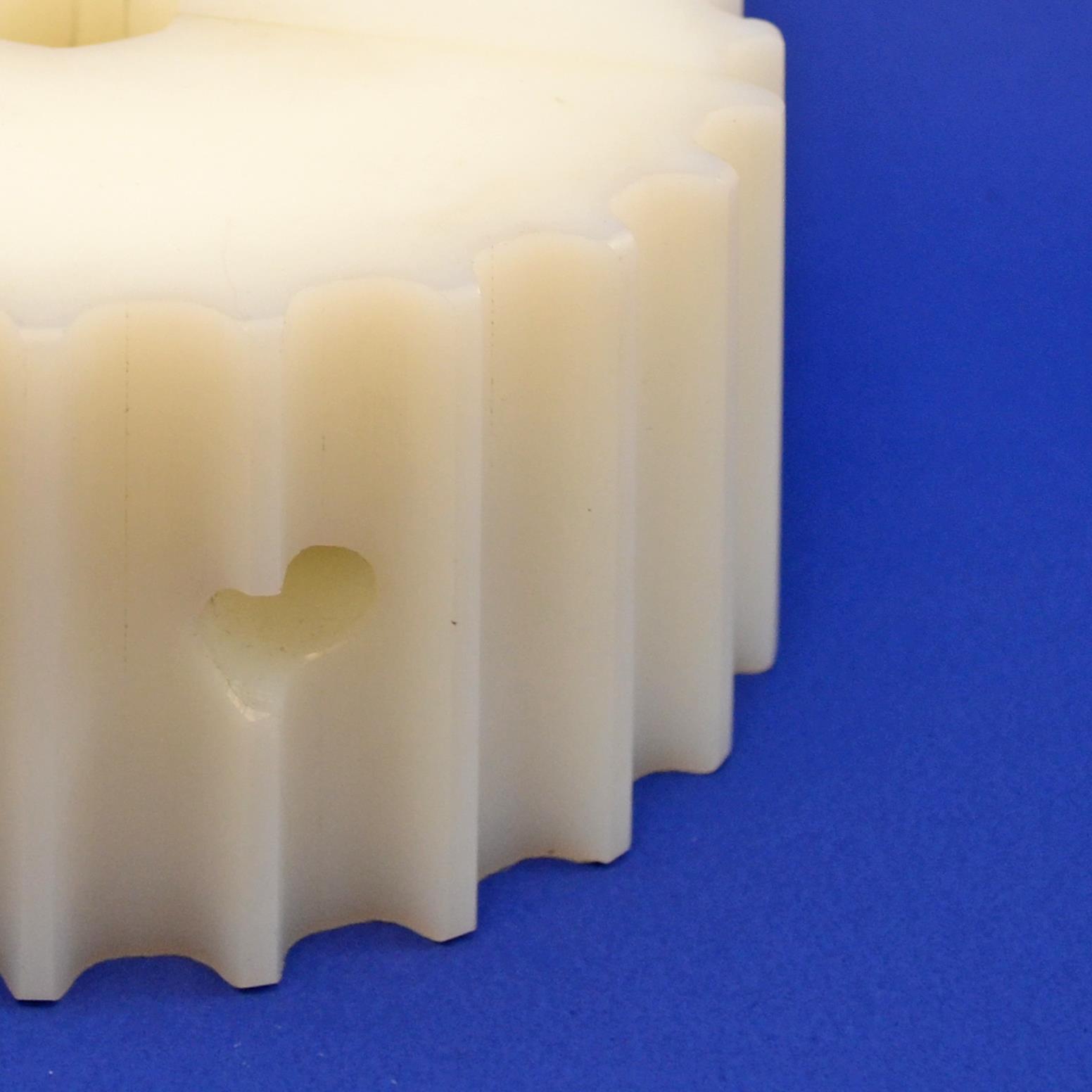
Properties
- Good mechanical and electrical properties
- Ideal balance of strength and toughness
- Good wear resistance
- Good impact resistance
Typical Uses
- Bushings
- Bearings
- Conveyor Wear Components and Guides
- Gears
- Pulleys
- Roller Wheels
- Sheaves
- Wear Pads
- Bearing and Wear Parts
- Valve Seats and Seals
|
|
Nylon Machinable Stock Shapes
Nylon's toughness, low coefficient of friction and good abrasion resistance make it an ideal replacement for a wide variety of materials from metal to rubber. It weighs only 1/7 as much as bronze. It is manufactured in two ways: extrusion process or cast.
Using nylon reduces lubrication requirements, eliminates galling, corrosion and pilferage problems, and improves wear resistance and sound dampening characteristics. Nylon has a proven record of outstanding service in a multitude of parts for such diverse fields as paper, textiles, electronics, construction, mining, metalworking, aircraft, food and material handling.
Nylon is easily fabricated into precision parts using standard metalworking equipment. Its good property profile combined with a broad size range availability have made the material very popular since it was first introduced in nylon stock shapes in 1946. Today, a variety of extruded and cast nylon grades are available to match specific application demands.
What Is the Difference Between Cast and Extruded Nylon
Both cast and extruded nylon are good choices for a wide range of machined parts. But, there are a few key differences to be aware of when selecting the right nylon for your application. Cast nylon materials inherently have lower stress levels than extruded nylon. this provides better dimensional stability and higher tensile and compressive strength. Cast nylon also tends to be easier to machine than extruded. It is typically used to machine larger shapes than extruded nylon.
|
|